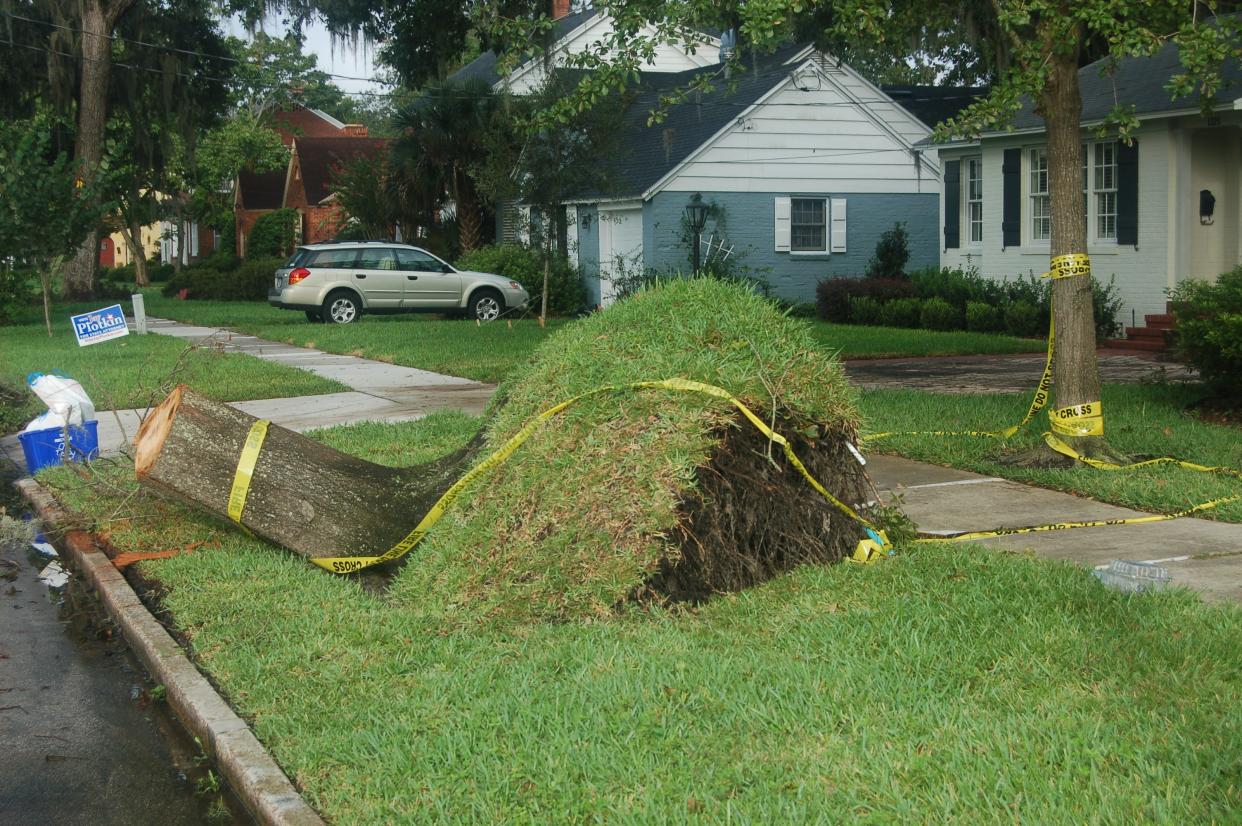Will your trees survive a hurricane's winds? What you should know about pruning and more

The National Oceanic and Atmospheric Administration said in its 2024 hurricane season forecast issued in May that it expects an 85% chance of “above-normal” activity this hurricane season. Since the time to prepare for hurricanes is before they strike, perhaps now is a good time to look at some of the lessons learned from previous hurricanes in regard to urban trees. This list is compiled by researchers from the University of Florida that went into storm damaged areas and surveyed the damage to the urban tree canopy.
1. When trees blew over in high winds, the primary reason was from root damage, root decay or saturated soils. If you picture the tree as a wine glass, the root flare is the base of the wine glass. The root flare should be readily visible for inspection. Many trees have had their root flares covered by soil during construction or landscape activities. Any damage to the root flare by construction, or other means, is a cause for alarm.
Often trees will give clues that there are problems with their roots. Routinely inspect your trees by stepping back away from the tree and look at the uppermost branches of the tree. A tree with root problems has thinner off-color foliage, bare spots or areas that are or not as full as the rest of the tree crown. An ISA Certified Arborist should be called in to inspect the tree if any problems with the root system are suspected.
Saturated soils occur when slow-moving storms produce a lot of rainfall for longer periods of time. Wet soils are less able to hold onto roots and the roots can slip through when heavy winds rock trees back and forth.
2. Trees growing in groups blew down less frequently and had less damage than trees growing alone. The trees growing in groups shared the wind load among themselves whereas the trees growing alone bore the brunt of the wind. This was also true in residential communities that had variety of species, ages and layers of trees that could share the wind burden. Single trees growing by themselves were more likely to be damaged.
3. Trees that were properly pruned had less damage than trees that were unpruned, or improperly pruned. Pruning young trees to form a single leader, eliminating co-dominant stems, leaving interior branches, and utilizing reduction cuts are all objectives of proper pruning. Over-thinning, removing interior branches, topping, lions-tailing, and over-lifting tree canopies are all examples of improper pruning. Many folks are surprised to learn that there is no licensure for arborists in the State of Florida. Utilizing an ISA Certified Arborist to prune your trees is the best way to ensure that your trees are pruned properly. You can find an ISA Certified Arborist by going to: https://www.treesaregood.org/findanarborist/arboristsearch.
Pruning 101: Before you get out the chainsaw, here are 4 tree pruning mistakes to avoid
2024 hurricane season: Here are the storm names for the 2024 hurricane season, NOAA's hurricane season outlook
4. Trees with confined root systems were more likely to uproot in storms than trees with unconfined root systems. If a tree is growing in an area where its root system cannot adequately spread out and anchor the tree properly, it may lose its ability to hold itself upright in storm-force winds. In our urban landscape sidewalks, driveways, underground utilities and streets all tend to limit the amount of rooting space that allow trees to anchor themselves. The larger the tree the more room it needs. Assuming a soil depth of at least 3 feet, a small maturing tree needs at least 100 square feet of rooting space; a medium-size maturing tree requires at least 400 square feet; and a large maturing tree needs at least 900 square feet of rooting space to provide a minimum amount of anchoring.
5. Over-pruning palms can increase the likelihood of them being damaged in a storm. Often, we hear the term “hurricane cut” when pruning palms. This is a myth. Palms that are pruned heavily are damaged more frequently in storms than palms that have never been pruned at all. When pruning palms, the best method is to only remove dead fronds. If more pruning is desired, never prune higher than 9 o’clock, or 3 o’clock. In other words, only remove the fronds pointing downward.
There is no way to completely eliminate the risk of a tree falling and causing damage in a storm. By looking into some of the lessons learned from previous storms, we can learn how to recognize and prevent tree problems before the storm. More information of trees and storms can be found on the University of Florida “Ask IFAS” website at https://edis.ifas.ufl.edu/entity/topic/trees_and_hurricanes.
Larry Figart is an urban forestry extension agent with the University of Florida/IFAS.
This article originally appeared on Florida Times-Union: Which trees are most likely to fall in a storm? What you should know

